San Blas Archipelago: A Rustic Escape in the Far Caribbean
Beautiful waters, welcoming people, and a lack of modern amenities make the San Blas archipelago a great adventure in the far Caribbean.
November 2017, Somewhere off the Caribbean Coast of Panama. I wish I had an epic travelogue to write, but I lost my journal and many of my photos. What follows is a brief photo essay based on what I could find.
Comprised of more than 360 islands, the San Blas archipelago spans more than 100 miles into the Caribbean off the coast of Panama. The indigenous Gunas have inhabited the islands for centuries, and they live lifestyles that are worlds away from what travelers think of when they think of the Caribbean.
Fortunately, they’re also welcoming to travelers seeking a rustic island adventure.
There are more than 50,000 Guna living on the islands and in a few other areas of Panama and Colombia. Most still live off the land and in traditional lives that revolve around fishing, farming, and trading textiles. Like many indigenous groups, the Guna have a strong connection to the land and sea, viewing themselves as stewards rather than masters of the environment. They largely retain sustainable practices, focusing on preserving coral reefs and marine life.
The Gunas have run their islands as an autonomous region and have governed themselves ever since they revolved against the Panamanian government in 1925. The comarca (autonomous indigenous territory) spans a sliver of the north coast of Panama and includes most of the San Blas islands. The Guna has a unique system of governance based on consensus and communal decision-making. Each island is governed by a local council of elders, known as the Saila, who are revered for their wisdom and leadership. Decisions affecting the community are made collectively, with the goal of preserving harmony and equilibrium within Guna society.
The Guna are one of the most colorful communities in Central America and are known around the world for their textiles. While young men are often shirtless and in shorts, women often wear traditional attire, including the muswe head scarf. The mola, which originated as a body painting and has morphed into a piece of wearable body art, has become a sought-after souvenir in the region. Many of these vibrant textile panels depict traditional motifs inspired by nature, mythology, and daily life
However, like many indigenous people, the Guna are facing modern challenges related to environmental degradation, rising sea levels, and encroaching development. As the San Blas archipelago lies in prime smuggling territory between Panama and Colombia, the communities are also coming face to face with smugglers.
Through advocacy and innovation, the Gunas are slowly adapting ancient traditions to meet the needs of a rapidly changing world while safeguarding the legacy of the past. Low-key tourism has also become an economic driver for the region.
A view of the capital in Panama City from Ancon Hill. The Guna Yala is only 145 kilometers as the crow flies, but it may as well be on another planet.
Sunset behind the mountains on the mainland. Most of the islands in San Blas are so small it’s quite easy to walk from one side to the other within 15 minutes.
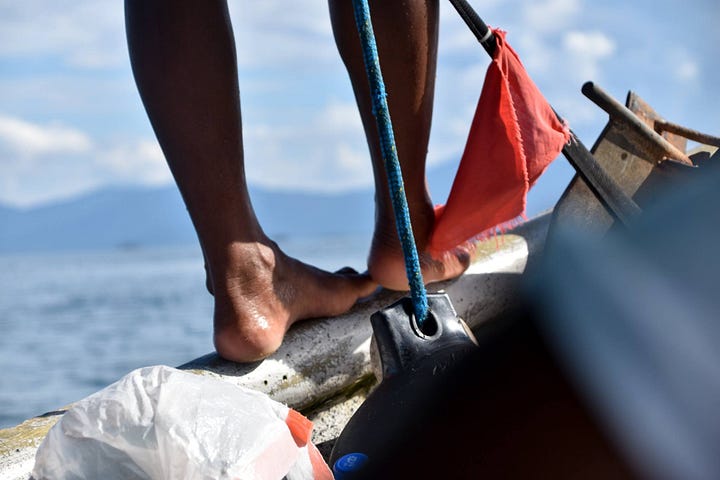
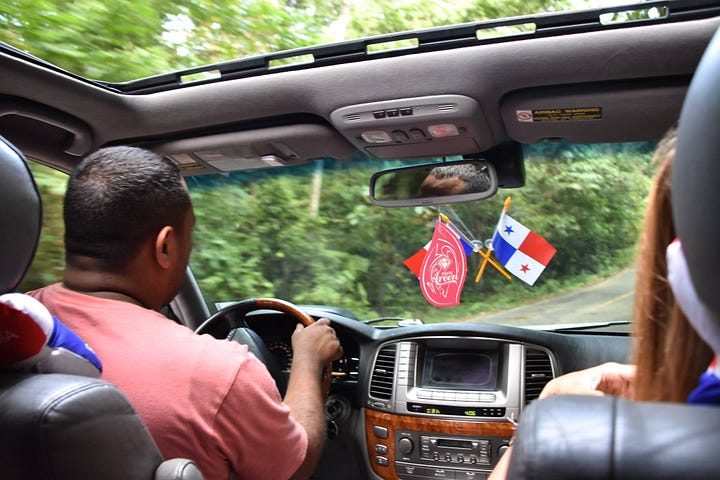
The Gunas run their own low-key tourism infrastructure with a network that shuttles travelers from Panama City to a couple of small towns on the Caribbean coast. The road to the coast can get sketchy and flood in the rainy season. From there, small boat operators run travelers out to the individual islands. While a few of these islands have electricity and small, modern hotels, most have only rustic accommodations and generator power a few hours per day.
Many islands in the Guna Yala only have a few homes. The island where I stayed had a couple families, most of whom were not around when I was there.
Accommodations are quite spartan and typically involve semi-outdoor bunkhouses. For three nights, I slept in the corner bed with blue sheets. One night I shared the space with a German man who slept on the other bed. While the islands are in the tropics and daytime temperatures get quite hot, breezes cool things down a bit in the evenings.
Island life in the Guna Yala typically involves snorkeling, reading, relaxing, and drinking beer in the evenings. On the island where I stayed, the generator ran part of the day to keep dozens of cases of Balboa beer cold as ice. I would have loved to get to know the Guna more, but the locals weren’t around much on my island.
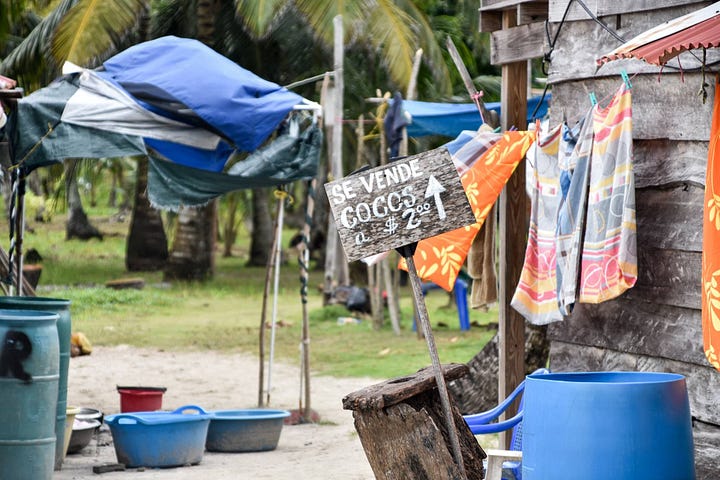
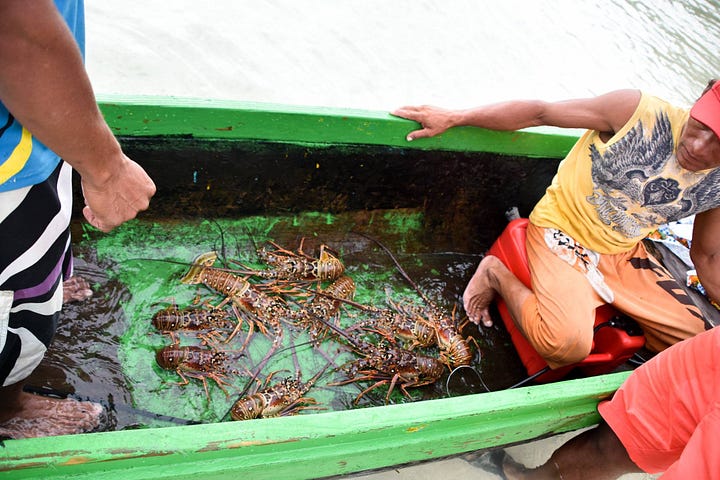
Guna hosts typically serve travelers three meals per day: fish, rice, fruits, water, and beer. However, you can also buy extra fruit and seafood. Lobsters were so cheap that I bought an extra one every evening off a fisherman.
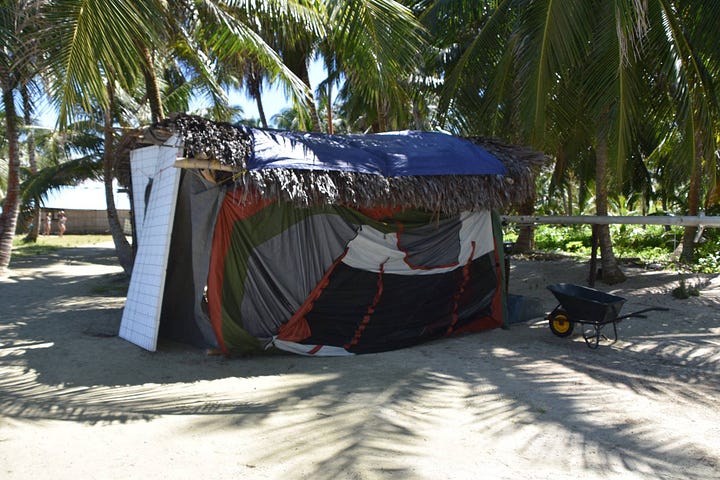
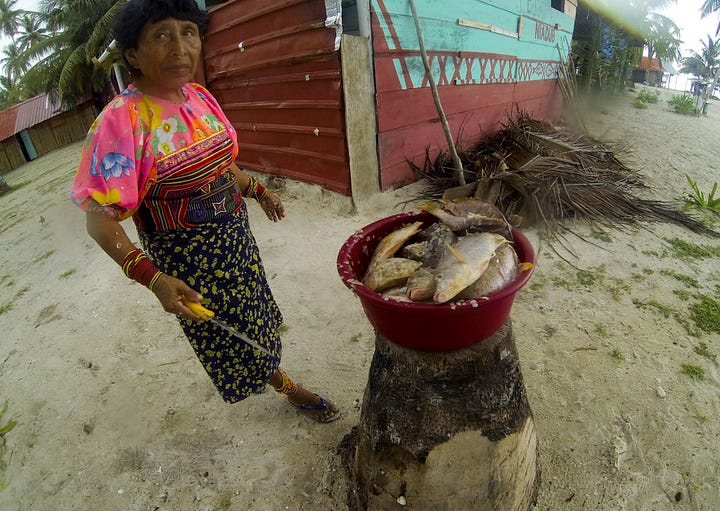
One of my Guna hosts cleaning fish and preparing dinner for the night. Gunas live mostly off the sea and land with meals of seafood, rice, plantains, and coconuts. They occasionally make trips back to the mainland for gas, cooking oils, and other supplies. Most live in permanent wood palm structures, but some also stay in temporary tent shelters.
Guna Yala is an autonomous indigenous territory governed by the Guna General Congress and led by three Saila Dummagan (Great Sailas). For all practical purposes, it operates as its own country, much like Native American reservations do in the United States. There are about 50 communities in Guna Yala spread out over all the islands.
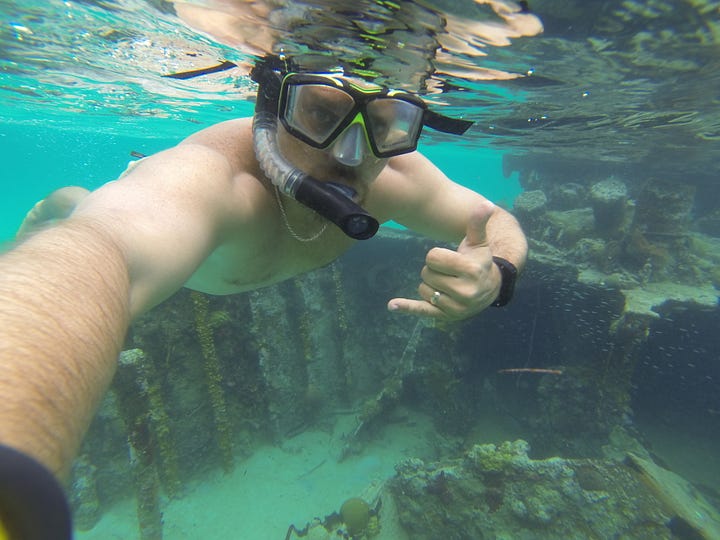
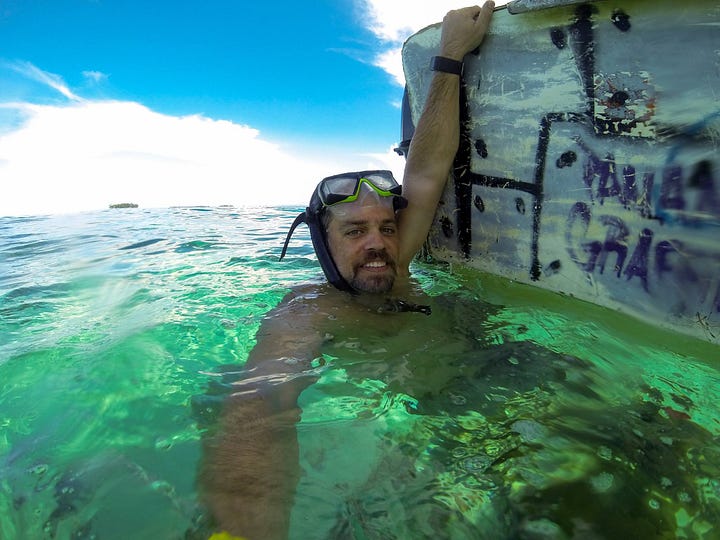
The Guna do not allow scuba diving or scuba gear or commercial fishing in their waters for fear it could lead to overharvesting of crustaceans or fish. However, they do allow spearfishing, and there is amazing visibility of more than 50 feet on most days. I spent most of my morning snorkeling and sightseeing the nearby reefs.
While the Guna have some small modern boats to reach the mainland or for longer distances, many still use ulus, traditional canoes carved from logs, for everyday transportation. Many paddle these, while others outfit them with sails and colorful paints. In some communities, neighboring islands are less than a mile away.
With no roads, cars, buildings, or hotels, nearly every island in Guna Yala is a paradise with unfiltered views of both the sunrise and the sunset.
Leaving the Guna Yala. There aren’t many timetables, schedules, or reservations. You grab your bag, walk down to the shore, and try to find a guy with a motorboat to take you back to the mainland. I heard one story about a guy who didn’t plan his transportation back in advance and spent a day longer than he anticipated.
I had a short stay, but I do plan to get back at some point.

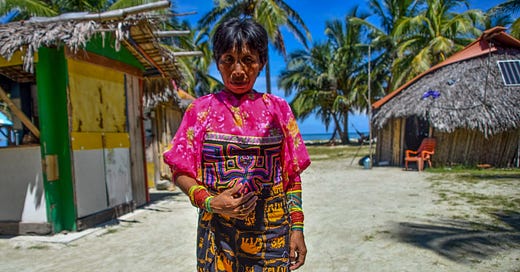




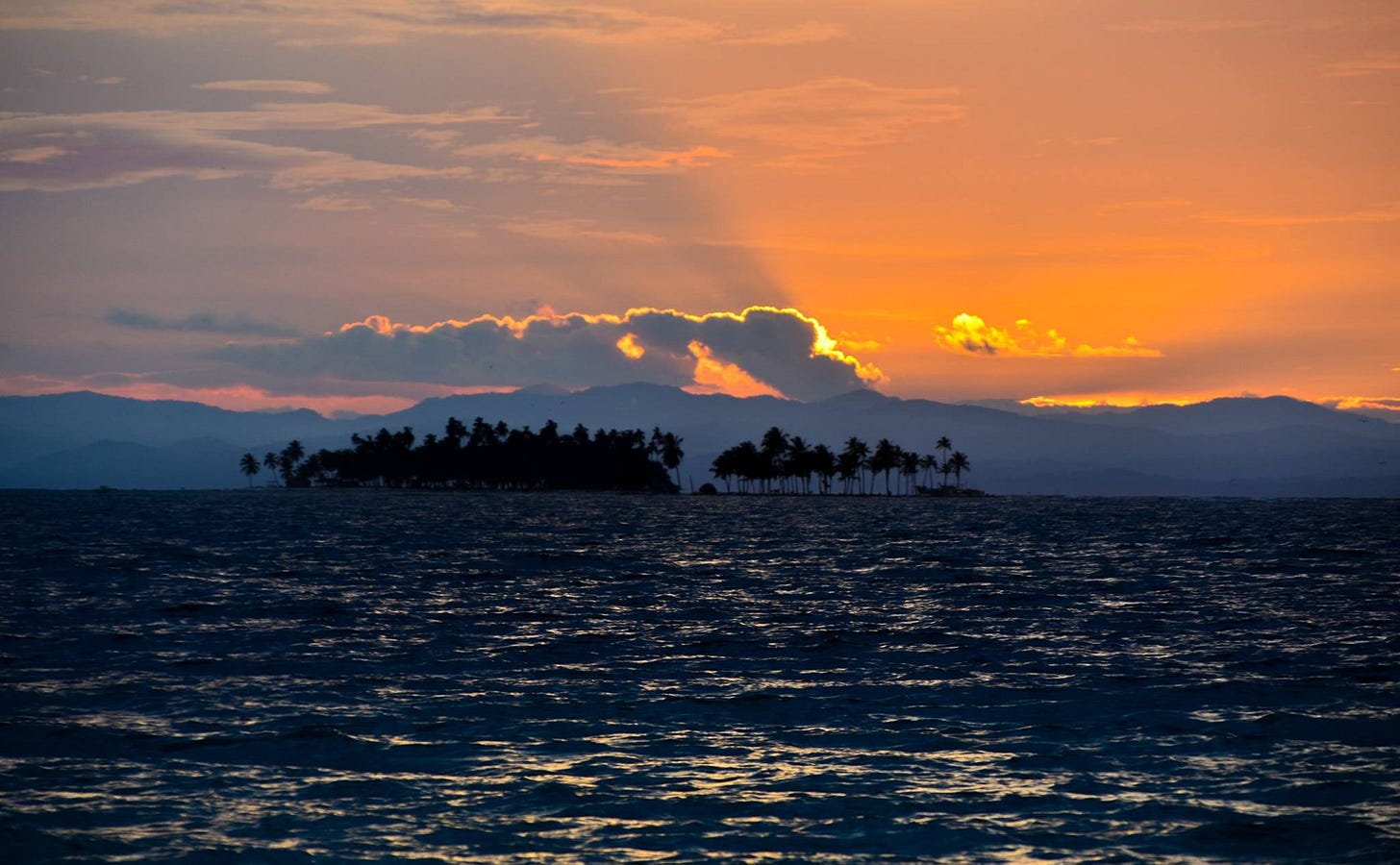
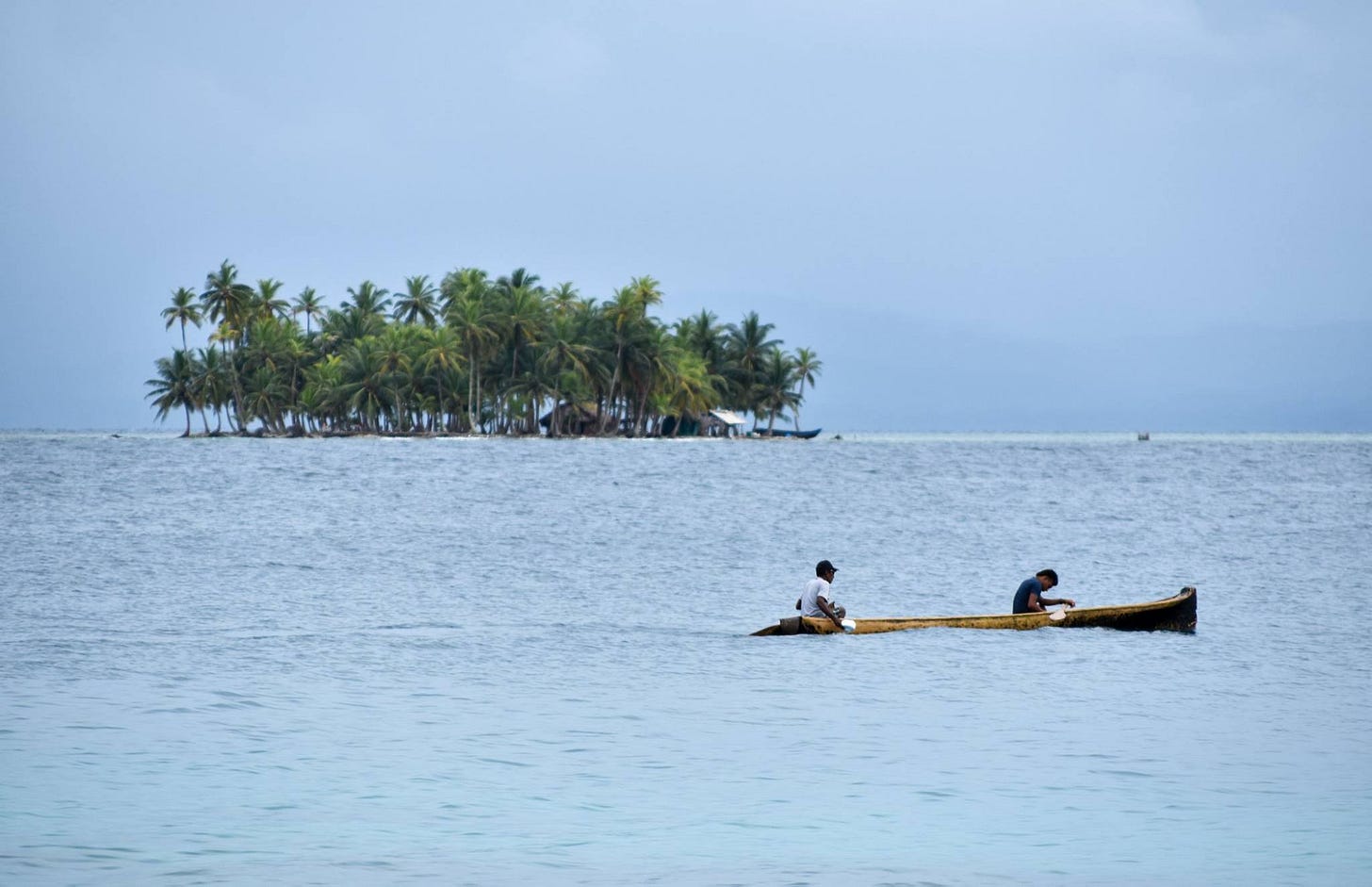
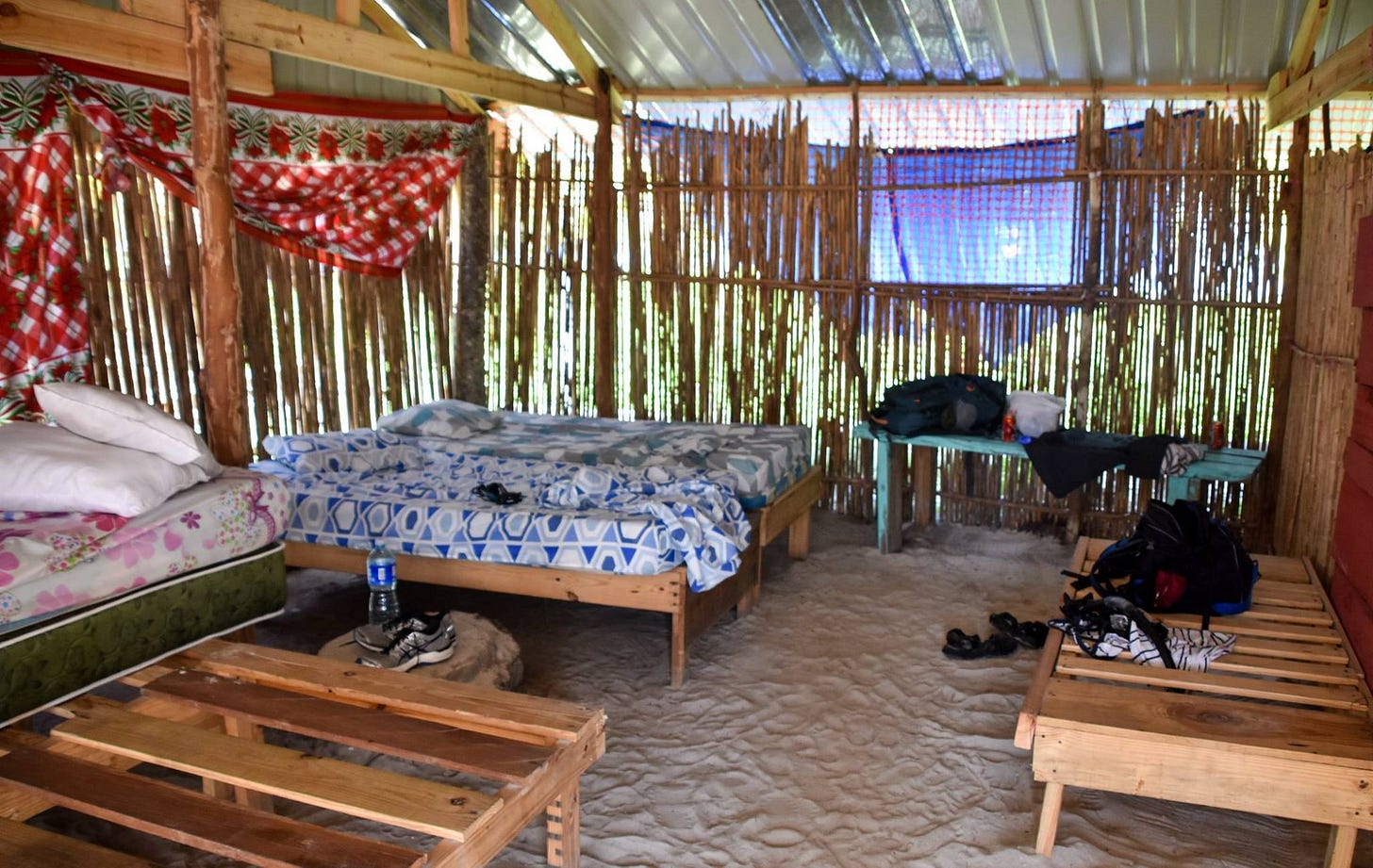
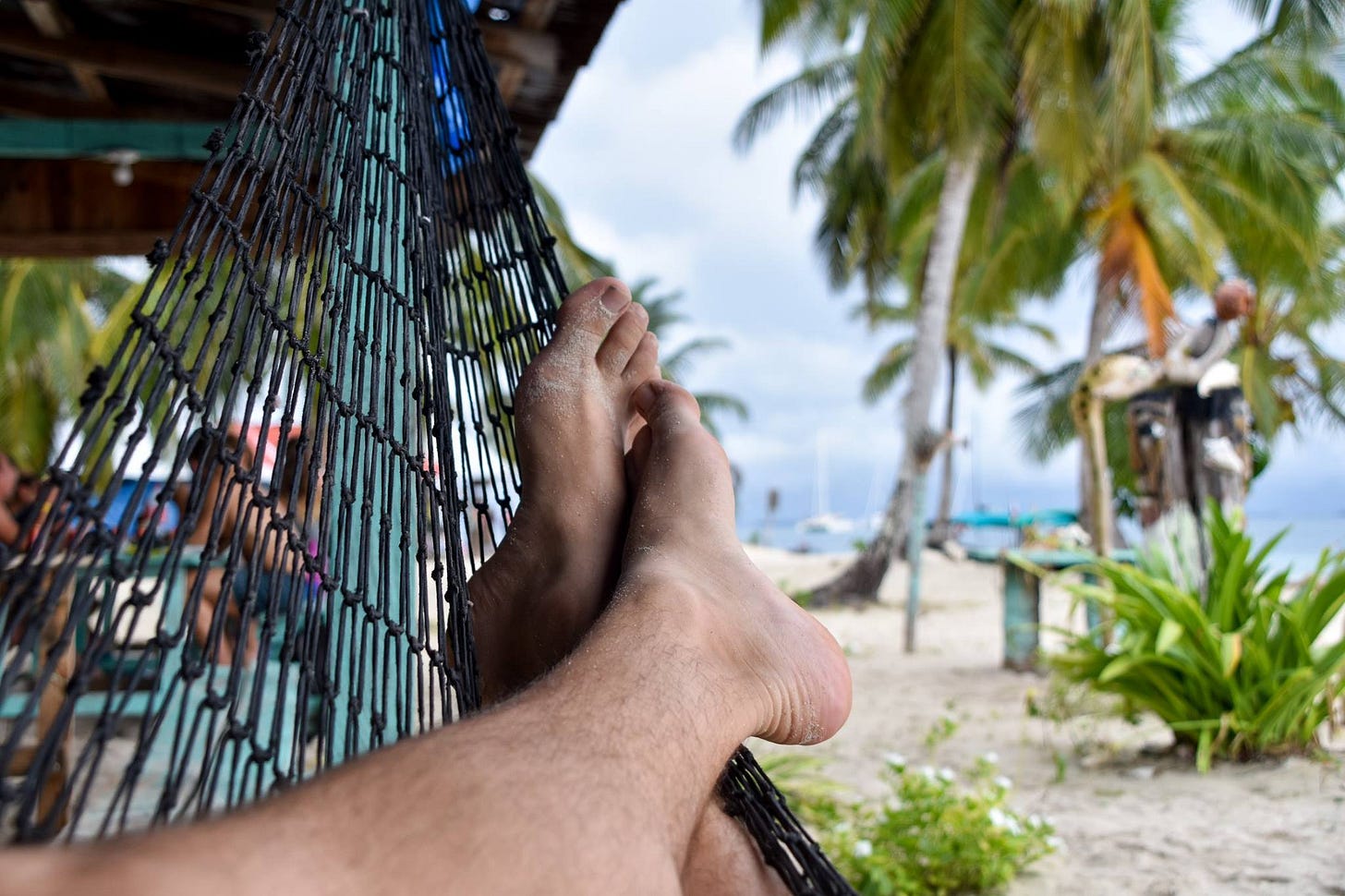
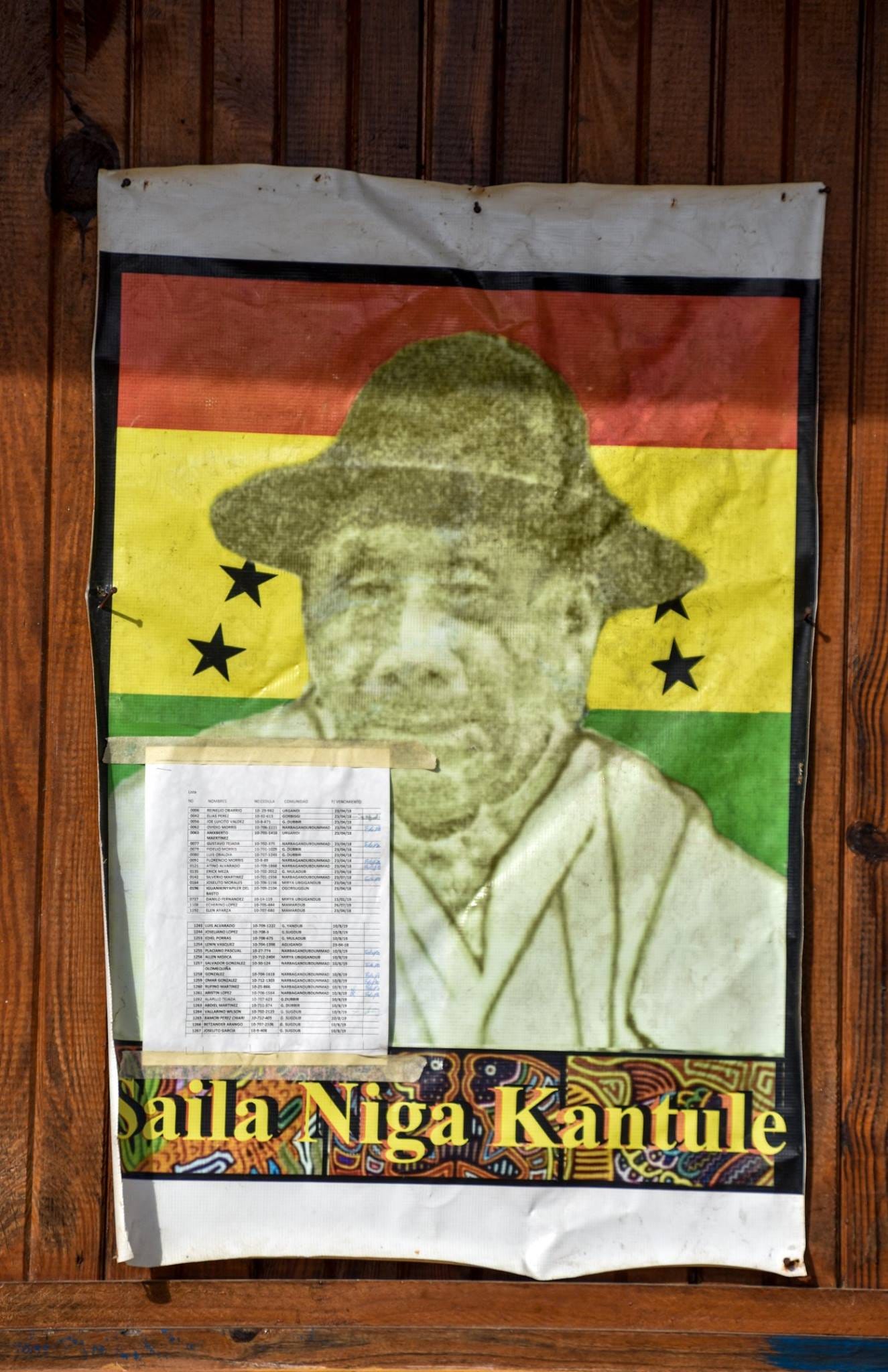

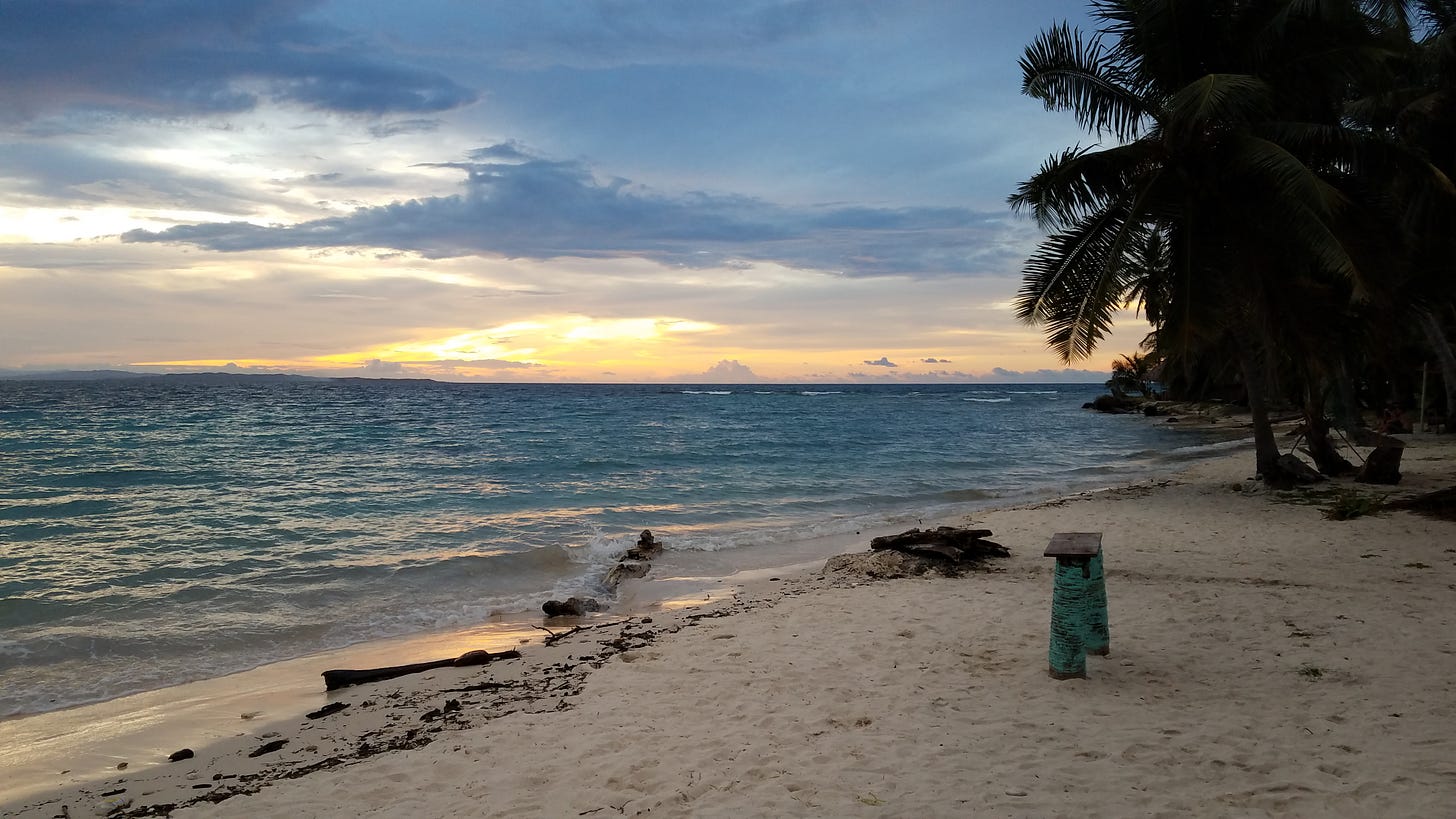
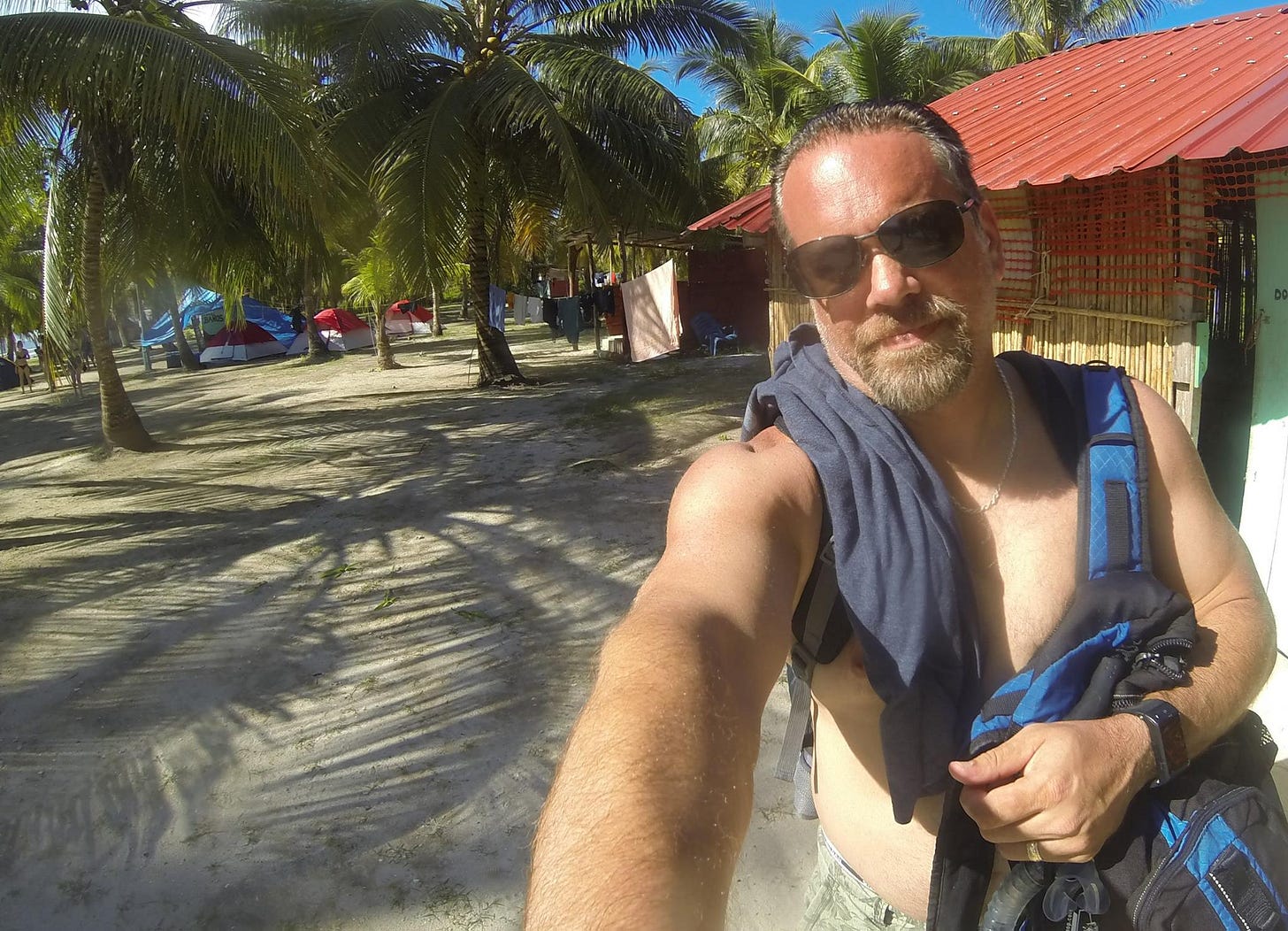
You're living the dream! The pictures are breathtaking. It's so unfortunate that indigenous people are always the ones to face challenges evoked by a neglectful world. I'm glad to have discovered the benefits of traveling not just for myself but for the community. Thank you for taking me (electronically) alongside you on your travels.